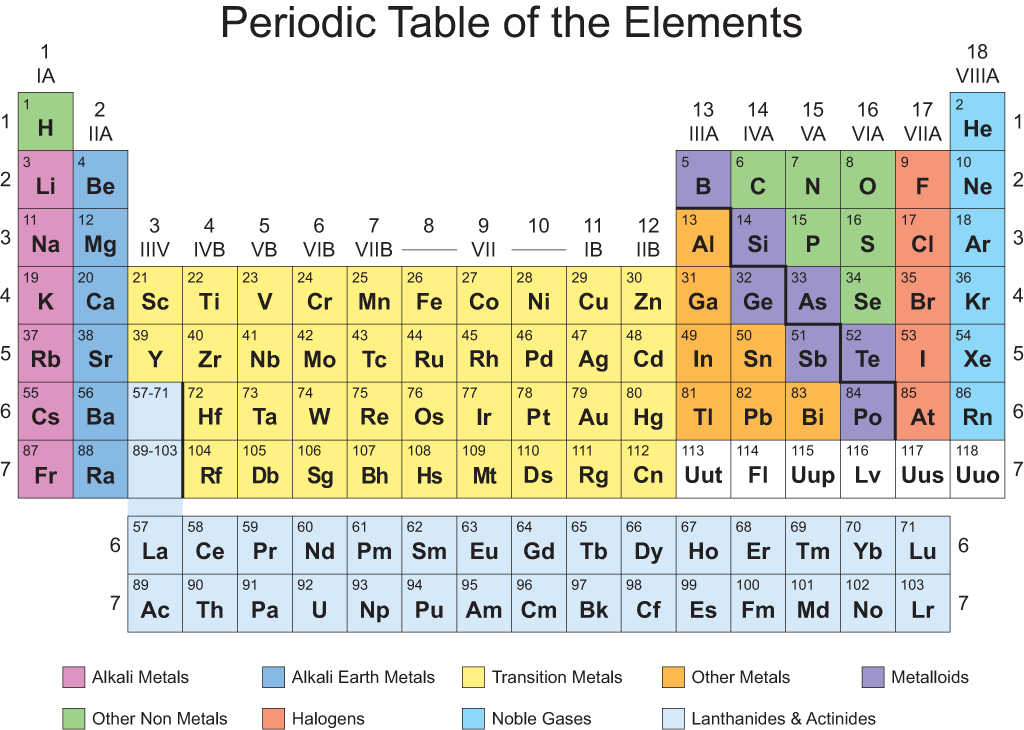


Carbon tetrachloride and carbon disulphide are important industrial solvents. Carbon monoxide is used as reduction agent in many metallurgic processes. Carbon dioxide is used in drinks carbonatation, in fire extinguishers and, in solid state, as a cooler (dry ice). Vegetal carbon, an amorphous form of carbon, is used as gas absorbent and bleaching agent.Ĭarbon compounds have plenty of uses. Another carbon form, the graphite, is used for high temperature crucibles, dry cell and light arch electrodes, for pencil tips and as a lubricant.

#C ELEMENT PERIODIC TABLE FREE#
The free element has a lot of uses, including decoration purposes of diamonds in jewelry or black fume pigment in automobile’s rims and printer’s ink. The natural gas deposits contain compounds formed by carbon and hydrogen. The remains of live plants and animals form deposits: of petroleum, asphalt and bitumen. All the plants and live animals are formed by complex organic compounds where carbon is combined with hydrogen, oxygen, nitrogen and other elements. Several minerals, like limestone, dolomite, gypsum and marble, contain carbonates. Carbon is present in the atmosphere as carbon dioxide in 0,03% in volume. This give carbon the ability to form long chains and rings of atoms, which are the structural basis for many compounds that comprise the living cell, of which the most important is DNA.īig quantities of carbon are found in the form of compounds. No element is more essential to life than carbon, because only carbon forms strong single bonds to itself that are stable enough to resist chemical attack under ambient conditions. The Earth's atmosphere contains an ever-increasing concentration of carbon dioxide and carbon monoxide, form fossil fuel burning, and of methane (CH 4), form paddy fields and cows. Pure crystalline carbon is found in the form of graphite and diamond. Free carbon is found in big reservoirs like hard coal, amorphous form of the element with other complex compounds of carbon-hydrogen-nitrogen. The estimation is that carbon forms 0,032% of The Earth’s crust. The most important of all may be the dichlorodifluoromethane, CCl 2F 2, called freon.Ĭarbon and its components are widely distributed in nature. At ambient temperature carbon tetrafluoride is gas, tetrachloride is liquid and the other two compounds are solids. Carbon forms compounds with the halogens with CX 4 as general formula, where X is fluorine, chlorine, bromine or iodine. The two first ones are the most important from the industrial point of view. It forms three gaseous components with the oxygen: carbon monoxide, CO, carbon dioxide, CO 2, and carbon suboxide, C 3O 2. A high number of metals combine with the element at high temperatures to form carbides. Among the halogens only fluorine reacts with elemental carbon. With hot oxidizing agents, like nitric acid and potassium nitrate, metilic acid C 6(CO 2H) 6 is obtained. At high temperatures it binds with oxygen to form carbon monoxide or dioxide. Elemental carbon is an inert substance, insoluble in water, diluted acids and bases, as well as organic solvents. The melting point of graphite is 3500✬ (6332✯) and the extrapolated boiling point is 4830✬ (8726✯). Its density fluctuates from 2.25 g/cm³ (1.30 ounces/in³) for graphite and 3.51 g/cm³ (2.03 ounces/in³) for diamond. The physical and chemical properties of carbon depend on the crystalline structure of the element. Chemically pure carbon can be prepared by termic decomposition of sugar (sucrose) in absence of air. Other forms with little crystallinity are vegetal carbon and black fume.
#C ELEMENT PERIODIC TABLE SERIES#
Although the classification is not strict, carbon forms another series of compounds considered as inorganic, in a much lower number than that of the organic compounds.Įlemental carbon exists in two well-defined allotropic crystalline forms: diamond and graphite. We know a minimum of about 1 million organic components and this number increases rapidly every year. The biggest group of all these components is the one formed by carbon and hydrogen. Separation and Concentration Purification RequestĬarbon - C Chemical properties of carbon - Health effects of carbon - Environmental effects of carbonĬarbon is unique in its chemical properties because it forms a number of components superior than the total addition of all the other elements in combination with each other.Plant Inspection & Process Optimalisation.


 0 kommentar(er)
0 kommentar(er)
